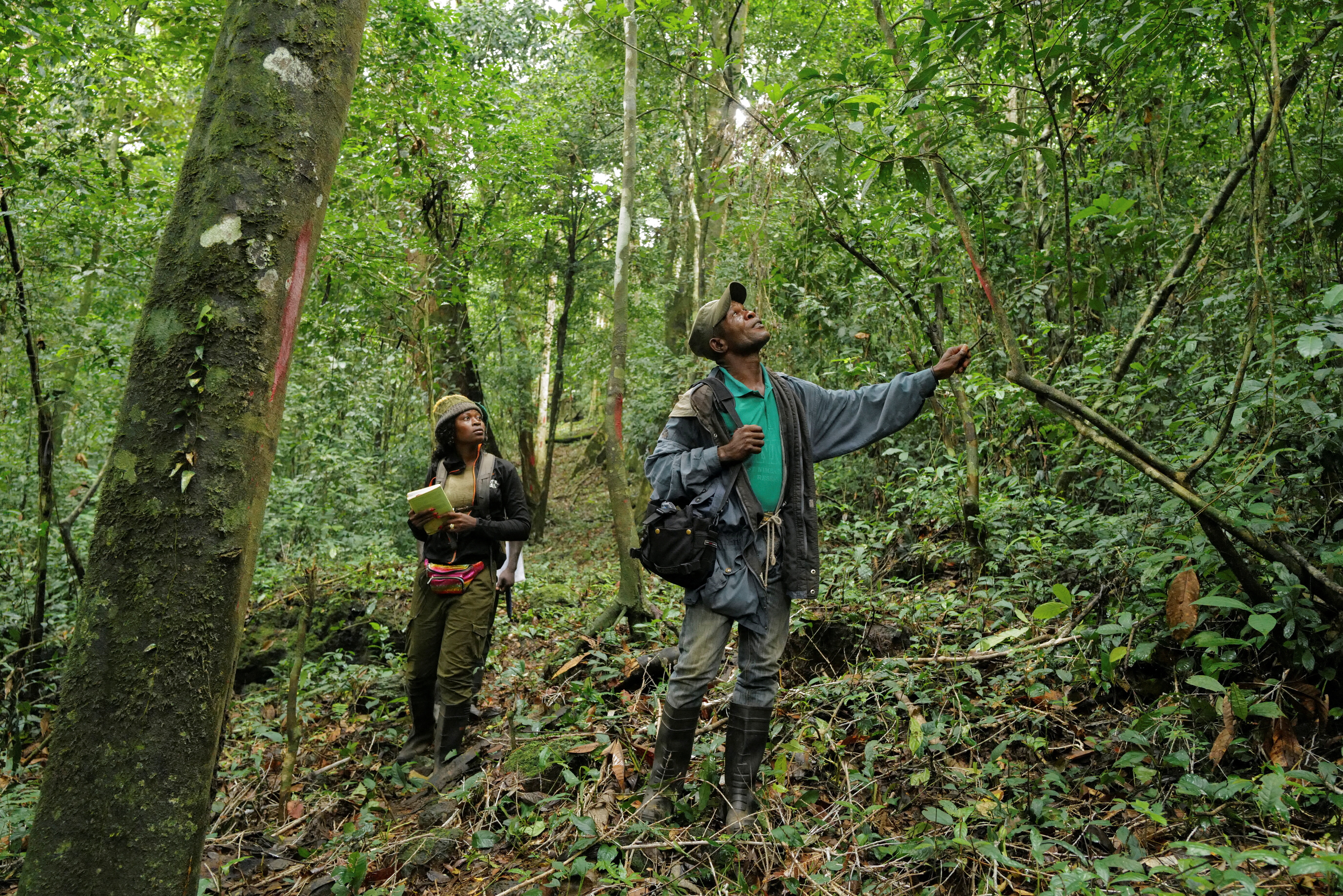How can we reduce the cost of remittances?

Image: A customer conducts a mobile money transfer, known as M-Pesa, inside the Safaricom mobile phone care centre in the central business district of Kenya's capital Nairobi July 15, 2013. To match Insight AFRICA-MOBILE MONEY. REUTERS/Thomas Mukoya
The personal transfers sent home by migrant workers (technically knows as remittances), undoubtedly help fuel the global economy. They alleviate poverty, feed, help educate and support millions of families all over the world. Increasingly they also provide a pathway to financial inclusion for some of the over 2 billion unbanked adults worldwide - for many, receiving a remittance is the first regular, recorded financial transaction that they make.
We know the amounts involved are vast. According to the latest World Bank Factbook 2016, global remittances will exceed $601 billion this year, with developing countries receiving over $440 billion. That’s nearly three times the amount of overseas aid and pretty much all the experts agree those numbers are likely vastly understated.
So far so good, but despite these positive numbers, we’re still at that point where the average cost of transactions globally is hovering at 5 - 10%.
I’m not normally a great fan of government market intervention, but with prices remaining so stubbornly high, I believe policymakers have an important role to play in setting out what we should be aiming for. Late last year we saw a real step change in that area. At the Valetta Summit on Migration diplomats from the EU and 30+ African countries pledged to:
Reduce the transaction cost of migrant remittances to less than 3% and eliminate remittance corridors with costs higher than 5% by 2030.
While that’s a clear and very laudable ambition, 15 years is a very long time. And this isn’t the first time a pledge like this has been made. Four years ago at the G20 Summit in 2011, Bill Gates made a rallying cry to the global leaders:
“We must continue lowering the transaction costs of remittances, so that this growing pool of money has as big an impact as possible on the poorest. Reducing these costs to an average of 5 percent (compared to the current average, which is roughly twice that) would save $15 billion."
This quote was actually one of the key inspirations behind setting up Azimo and the good news is that Gates’ 5% target has since been adopted by the G20. The bad news is that 5 years on there is still no agreed target timeline for this to happen.
But I’m hopeful things will improve, and quickly. As we welcome in 2016, here’s what I think will happen to drive a dramatic global drop in remittance prices over the next few years:
The high street pay-in networks will disappear:
The biggest single cost of a remittance is the high street pay-in network. The overhead and commissions for these stores and agents, plus the cash management and security expenses, are huge. But things are already changing: following the surge in Internet and mobile penetration more and more migrants are sending money digitally. In 10 years time I predict there will be hardly any money transfer shops left. In the few places that a physical presence is still required we will see a shift away from human tellers to digitized low cost remittance ATM terminals. When Amazon and Expedia shifted retail and travel online it significantly brought down the costs for consumers, and the same will happen in the money transfer industry with prices dropping as a result.
Smartphone ubiquity will slowly make financial inclusion a reality
Africa and other emerging and developing countries are finally becoming financially included. When that happens remittance prices will come down. It is much faster and cheaper to send to a mobile wallet or bank accounts than to settle in cash. Unfortunately the change won’t happen overnight: there are still over 2 billion adults without bank accounts but smartphone penetration will change this. Once those consumers have a smartphones and mobile wallets they can receive money faster, more conveniently and most importantly at less cost. Over 80% of Azimo’s transfers to Kenya are now via the instant mobile wallet service M-Pesa, and the whole financial services industry will continue to invest in this area as these digital solutions becoming increasingly popular.
Blockchain/Bitcoin technology will rapidly change the remittance backend
Over the next 5 to 10 years I expect Blockchain and distributed general ledger solutions to go mainstream. As they get adopted by major financial institutions in place of services like SWIFT which are expensive and slow, the international delivery of funds will speed up. In competitive market these speed and cost savings will be passed on to remittances customers further lowering costs.
We will better measure remittance costs.
Many of the published remittance price numbers relate to low send amounts (often around $200). That used to be the US remittance markets average send amount (it’s a bit higher now); driven down by a huge amount of weekly cash remittances by Mexican workers without bank accounts. Having looked at hundreds of businesses in the sector we know that the average amount sent in other corridors is much higher at around $400-$500. That’s the number we should track when calculating the costs.
It will not happen over night, but the targets set out by Bill Gates, the World Bank and the other policymakers are very achievable. I hope that as an industry the remittance sector can come together to harness innovation, and remove unnecessary costs from the system to make the policymakers targets come true, sooner rather than later.
Don't miss any update on this topic
Create a free account and access your personalized content collection with our latest publications and analyses.
License and Republishing
World Economic Forum articles may be republished in accordance with the Creative Commons Attribution-NonCommercial-NoDerivatives 4.0 International Public License, and in accordance with our Terms of Use.
The views expressed in this article are those of the author alone and not the World Economic Forum.
Stay up to date:
Migration
Related topics:
Forum Stories newsletter
Bringing you weekly curated insights and analysis on the global issues that matter.
More on Economic GrowthSee all
Khadijah Alkadi and Rayan Alamoudi
November 24, 2025






